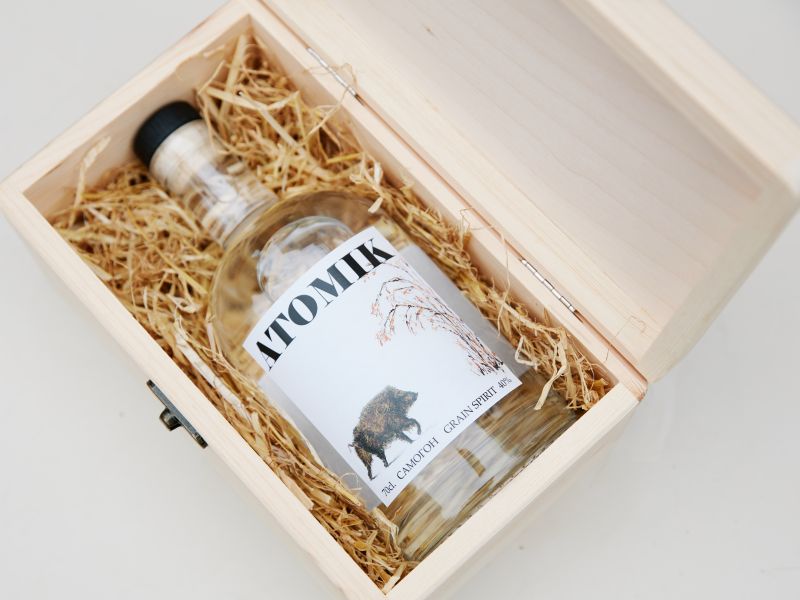Radioactive Grain from Chernobyl Has Been Distilled into Vodka
It's Chernobyl — in vodka form.

Thrill seekers visiting the ruins of the Chernobyl Nuclear Power Plant in Ukraine may soon be able to take a piece of the site's radioactive history home with them — in their livers.
A team of scientists from the U.K. and Ukraine have just produced the first bottle of what they're calling Atomik vodka: artisanal spirits made from water and grain harvested in the reactor's once-forbidden exclusion zone.
Though the 1,000-square-mile (2,600 square kilometers) zone surrounding the plant was initially declared uninhabitable by humans for 24,000 years following the 1986 meltdown, the makers of Atomik assured BBC News that their product is no more radioactive than any other liquor on the market.
Related: 5 Weird Things You Didn't Know About Chernobyl
Part of that is because much of the exclusion zone is not nearly as dangerous as it was feared to be 33 years ago. Some radiation hotspots — such as the Red Forest, where much of the radioactive material from the reactor spilled — remain off-limits to visitors. However, for the most part, the risk of radiation contamination throughout much of the exclusion zone is now considered "negligible" by the Ukrainian government, which reopened the zone to tourism nearly a decade ago.
Today, Chernobyl is the No. 1 tourist destination in Ukraine, hosting more than 60,000 visitors in 2018, local tourism officials reported. Visits spiked by about 30% in May 2019, following the debut of HBO's "Chernobyl" miniseries.
Still, trips to the zone are highly controlled, with tour groups often forbidden from touching local plants or eating local produce. According to Anders Moller, a biologist who's spent several weeks a year studying the exclusion zone for the past few decades, local crops are often contaminated with radiation and can cause "serious problems" if ingested, Moller previously told Live Science.
Sign up for the Live Science daily newsletter now
Get the world’s most fascinating discoveries delivered straight to your inbox.
Sure enough, the rye that the Atomik founders grew in the exclusion zone for their vodka tested positive for radiation. However, according to Atomik co-founder and University of Portsmouth professor Jim Smith, all traces of contamination disappear in the distillation process, during which the fermented liquid gets purified and water and other diluting substances are removed.
"Any chemist will tell you, when you distill something, impurities stay in the waste product," Smith told the BBC. (Radiation tests conducted by Smith's colleagues at the University of Southampton confirmed the product to be as safe as any other hard liquor.)
Just one bottle of Atomik vodka exists at the moment, but the founders hope to cap at least 500 others by year's end and sell them to thirsty Chernobyl tourists. According to Smith, 75% of the vodka's profits will go back to locals living in exclusion zone villages, which have seen scant economic development since the nuclear disaster 33 years ago.
"After 30 years, I think the most important thing in the area is actually economic development, not the radioactivity," Smith told the BBC.
Atomik vodka is the first consumer product to come from the exclusion zone since the meltdown, the BBC reported. Apparently, it tastes like rye whiskey with "fruity notes."
- Images: Chernobyl, Frozen in Time
- 10 Times HBO's 'Chernobyl' Got the Science Wrong
- Chernobyl Nuclear Disaster 25 Years Later (Infographic)
Originally published on Live Science.

Brandon is the space/physics editor at Live Science. His writing has appeared in The Washington Post, Reader's Digest, CBS.com, the Richard Dawkins Foundation website and other outlets. He holds a bachelor's degree in creative writing from the University of Arizona, with minors in journalism and media arts. He enjoys writing most about space, geoscience and the mysteries of the universe.









